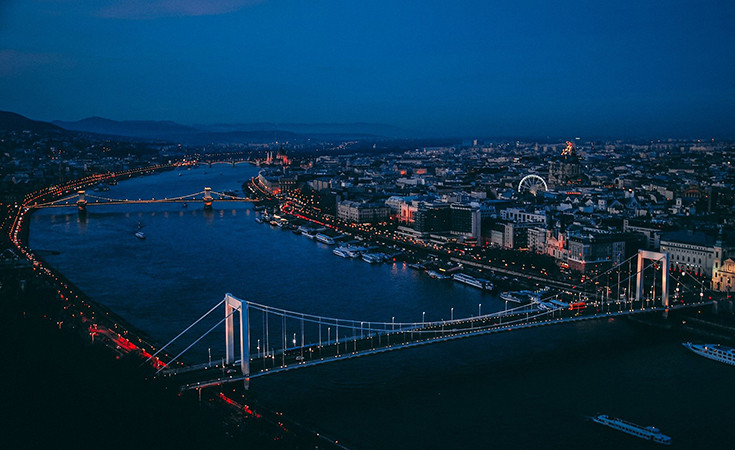
Budapest is famous for its bridges, true gems of the Danube. The Elisabeth Bridge, or Erzsébet Híd, is one of the city’s most attractive bridges, not only for its beauty, but its history as well. It is located on the narrowest part of the Danube in Budapest, spanning a length of 290m. It connects the 15th March Square and the oldest church in Budapest and the Matias restaurant with the adjacent square in Budim.
Elisabeth of Bavaria was a particularly beautiful woman still remembered today because of her love for Hungary. Her husband was Franz Joseph, the Emperor of Austro-Hungary, whom she married at only sixteen. They had several children together, but due to the customs of the time she couldn’t raise them herself. Instead, she focused her attention on education and travelling.
However, she adored Hungary and would always come back to Budapest. Hungarian was almost like her mother tongue, she loved everything that had to do with Hungary, the people, the language, the culture as well as the traditions and the streets of Budapest. In fact, she was the only empress of Austro-Hungary that the people of Hungary actually loved. The bridge was named in her honor when she was assassinated in 1898. Although the bridge looks the same as when it was built today, it had been demolished during World War Two. Today, you can see the statue of Elisabeth of Bavaria near the bridge on the Buda side. Today’s bridge was constructed between 1961 and 1964.
The Elisabeth Bridge had a different construction than other bridges in Budapest, which made it impossible to be rebuilt completely the same as it used to be. Parts of the old bridge’s decorations were saved, and can still be seen in front of the Museum of Transport. Even though it was built on the foundations of the old bridge, the reconstructed bridge couldn’t be built more like the old version. The design of today’s bridge was created by Pál Sávoli, while the Japanese designer Motoko Isi created the special lighting of the bridge. The Japanese government donated 120 million pounds for the construction of the bridge. Budapest itself invested 150 million into the construction efforts.
Author of the article: Ljubiša Đuričić